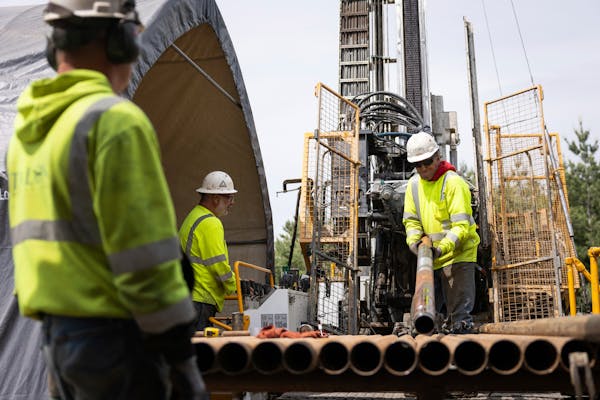Opinion editor's note: Star Tribune Opinion publishes a mix of national and local commentaries online and in print each day. (To contribute, click here.) This article is a response to Star Tribune Opinion's June 4 call for submissions on the question: "Where does Minnesota go from here?" Read the full collection of responses here.
•••
"Talon's mine plan revives safety debate" (June 25), about the proposed Talon Metals Tamarack-area nickel mine, quoted retired state employee Bruce Johnson saying that the proposed mine project was like "sticking the camel's nose under the tent."
As any mining engineer knows, it is a common practice to present a "limited scope" mining project for permitting. This contrived, limited project is the camel's "nose."
The rest of the animal is revealed once the project has secured its initial permits, when the mining company requests approvals to expand the operation.
As a retired mine engineer residing in Hibbing, my last position was technical services superintendent helping with permitting and starting up the historic sulfide Haile Gold Mine in South Carolina. I've spent half of my career on the Iron Range in a variety of positions from front line supervisor, planning engineer, tailings dam construction and maintenance engineer, and blasting and road construction engineer. I think Minnesota must be realistic about what the whole Talon Metals mine "camel" is likely to entail.
First, we all must understand that the Talon Metals mine project, with its recently proposed 60-acre footprint and 447-acre size including the initial underground mining area, is a small fraction, or a high grade "nugget," of the area that would be mined if the project is permitted. Talon has surface control and mining leases in an area of over 30,000 acres (about 85% of the size of Minneapolis), with an 11-mile strike zone currently being punctured by a fleet of exploratory drills. Everything in my experience as an engineer tells me that this entire area will be exploited for its minerals.
The Tamarack deposit contains high concentrations of nickel, copper, cobalt and associated platinum, palladium and gold. It doesn't matter if the deal with Tesla falls through or whether cheaper, safer metals can be used to build electric vehicle batteries. Mining this rich deposit will be profitable for the owners, with or without a "green" rationale. Mining permits do not dictate where minerals will be sold or that they can only be used for certain "green" products.
The Tamarack mineral deposit spreads from the Sandy River watershed in the Mississippi River Basin to the Kettle River that flows into the St. Croix River. This entire area is wetlands, lakes and streams. Talon's chief operations officer says the mine has "district-scale" potential. Eventually the waters in and downstream of this "district" will be affected by the Talon mine.
Second, Talon's high-grade minerals have been found at depths from a few hundred to several thousand feet deep. Eventually, both underground and open-pit mining are likely. Based on what I've seen throughout my career in the mining industry, whatever the initial plan or the increase in environmental impacts, the mining company's economics will drive the resulting size and type of the mine.
Third, economics — and weather — also mean that the transportation of Talon Metals ore and some waste rock almost 500 miles to North Dakota is not a sustainable business model and not likely to happen. No other mine does this, and the costs would be very high. Ore loaded into rail cars in Minnesota and sent across the North Dakota prairie in winter will freeze solid without strong chemicals added.
My money is on the prediction that, in time, processing of Talon Metals ore and storage of highly toxic waste rock and tailings above ground will land back in Minnesota at the portal of the new mining district.
Finally, what does the rest of the camel look like in the next few decades? No one is talking about the likely real meaning of a U.S. "supply chain" for nickel. It would require a domestic nickel smelter with its sulfuric acid mist, toxic metals pollution and noxious fumes. Although there are copper smelters in Arizona and Utah, the only nickel smelter in the western hemisphere is in Sudbury, Canada.
The "whole camel" entering the tent with Talon Metals will include a huge mineral excavation and likely on-site processing, tailings and waste rock storage. It may also include a smelter not just for Talon, but to satisfy the market for smelting concentrates from half a dozen other nearby copper-nickel projects waiting for approval.
Does Minnesota want this foreign beast in our state?
Chris Baldwin, of Hibbing, is a retired mining engineer.

Should Metro Mobility even be thought of as supplemental?

What does Anoka-Hennepin really teach about DEI?



